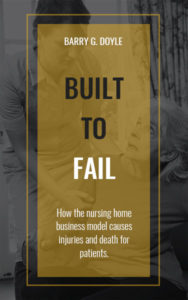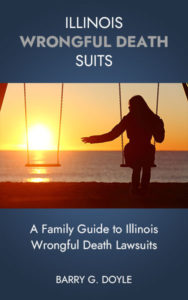The Illinois Department of Health has cited and fined Sharon Health Care Elms when nursing staff twice attempted to manually transfer a resident with left-sided paralysis without using the required mechanical lift or proper assistance, resulting in the resident falling and suffering a distal femur fracture. The resident, who had a documented history of cerebral palsy and previous hip fracture, was supposed to have all transfers performed with a mechanical lift by two staff members according to the resident’s care plan.
The case involves a highly vulnerable resident with cerebral palsy, left-sided paralysis, and a history of falls including a previous hip fracture. The resident’s care plan clearly stipulated “Transfers: resident requires extensive assistance by two staff to move between surfaces using a mechanical lift.” This requirement was reinforced in the Minimum Data Set assessment, which stated the resident “requires extensive assistance of 2 staff members and mechanical lift for all transfers.”
Despite these clear directives, nursing staff attempted to manually transfer the resident without proper equipment or assistance on two separate occasions within a two-week period. The first incident occurred when a Certified Nursing Assistant (CNA) attempted to transfer the resident from wheelchair to shower chair without using the mechanical lift. According to the facility’s fall investigation report, the CNA “was behind the resident holding her while the resident held shower bar. The resident jerked around and fell on her buttocks.” When interviewed, the CNA claimed she “didn’t know she was supposed to transfer the resident at all times with a mechanical lift” and “hadn’t worked with the resident very often.”
Following this first incident, staff was supposedly educated on the resident’s transfer requirements. However, just over two weeks later, another CNA attempted to transfer the resident without the mechanical lift, resulting in a more serious fall and injury. The nursing progress notes documented: “CNA came to Nurses’ Desk and stated the resident needed something for pain.” When the nurse visited the resident, the resident complained of pain in her “left upper thigh” describing it as “deep aching.”
Later documentation revealed more details about this second incident. The nurse wrote that the CNA had “lowered the resident to the floor” and the resident was “complaining of pain in the left leg, describing it as excruciating” and was “unable to move her left leg.” However, the full truth only emerged gradually. Initially, the CNA claimed she “only lowered the resident to the floor” when the resident’s “leg buckled.” The nurse didn’t immediately consider this a fall or file a report. The Director of Nurses later clarified that “even when you lower someone to the floor, it’s considered a fall.”
The resident was eventually sent to the emergency room where hospital records documented a very different story from what staff initially reported. The hospital history states the resident “was reportedly being transferred by the staff when the resident was dropped, landing on her left side.” Imaging revealed “a distal periprosthetic femur fracture on the left.”
When interviewed during the investigation, the resident became “visibly upset, crying when talking of incident” and repeatedly stated “I hurt. I’m afraid of the lift.” The resident also specifically recalled “staff dropped me.” The second CNA admitted during interviews that she “wasn’t aware she was supposed to transfer the resident with a mechanical lift and additional staff assistance, at all times.”
The Care Plan Coordinator, who was responsible for all facility fall investigations, confirmed that both CNAs had attempted to transfer the resident without using the required mechanical lift or having a second staff member present for assistance. The coordinator explained that the resident “does not stand and has been a mechanical lift for the past two years” and that “facility policy is for all mechanical lift transfers to be performed with two staff members present.”
The physical and emotional consequences of these incidents were apparent during the investigation when two CNAs prepared to transfer the resident using the mechanical lift as required. The resident “began yelling out and was tearful with any movement of her left leg,” demonstrating the ongoing pain and fear resulting from the improper transfers.
One of our core beliefs is that nursing homes are built to fail due to the business model they follow and that unnecessary accidental injuries and wrongful deaths of nursing home residents are the inevitable result. Our experienced Chicago nursing home lawyers are ready to help you understand what happened, why, and what your rights are. Contact us to get the help you need.



Leave a Reply
You must be logged in to post a comment.